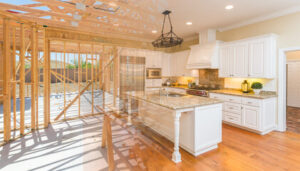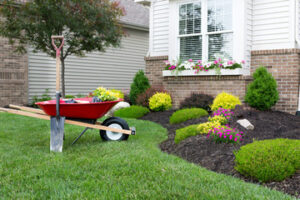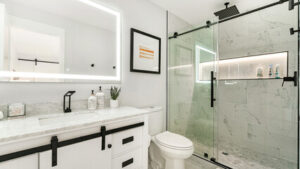Stucco Removal can be challenging for those without the proper equipment and endurance. Start small, choosing a hidden area to cut into, like a 1×1-foot square.
Be sure to wear a dust mask and safety goggles and use the proper tools to prevent damage to the underlying brick. Moisture issues that are not addressed during the process can lead to mold and structural damage in the future.

Stucco Removal is a complex project that requires a variety of tools for success. Choosing the right tools ensures efficiency, safety, and quality results. Pneumatic tools offer power and versatility, while hand tools provide finesse and control. Using proper cleaning and storage techniques is also important to extend the life of these tools.
For hand tools, it is important to clean the pry bars regularly to prevent rust and corrosion. The handle design plays a critical role in the effectiveness and comfort of the tool. Ideally, the handle should be designed to match the natural shape of the hand for optimal leverage and minimize strain on the hands and wrists. In areas with humid environments, it is also advisable to choose tools that are resistant to corrosion and rust. Additionally, a padded handle can enhance comfort and mitigate fatigue during lengthy projects in busy urban areas like West Adams, Los Angeles.
The best tool for cutting stucco is a circular saw with a diamond blade, which can easily cut through the material and avoid causing damage to the underlying wall. However, it is important to wear protective gear and follow all the appropriate safety procedures when operating this tool.
Another essential tool for stucco removal is a demolition hammer, which can be used to break down the outer layer of the material and remove it from the walls. It is also useful for removing old caulking and sealing materials, which are often contaminated with rust and mold.
A good demolition hammer should be lightweight and comfortable to use. A padded grip can reduce stress on the hand and wrist, while a smooth surface provides a better grip for precise work. In addition, a demolition hammer should be inspected regularly and cleaned after every use to avoid corrosion and prolong its lifespan.
Lastly, a rotary hammer drill bit is useful for drilling through the surface of the stucco. It is recommended to use a high-quality bit with a diamond blade for maximum durability and precision. It is also a good idea to lubricate the drill to minimize friction and increase its lifespan.
Safety
Stucco is a popular exterior cladding material that offers a unique aesthetic, but it can also be problematic if not properly installed. Improper installations can result in moisture infiltration, cracks, and mold growth. These issues can lead to costly repairs and may require additional structural work to correct. Fortunately, proper stucco removal can help resolve these problems and ensure that the building is safe and functional.
Before the process begins, a professional will assess the existing stucco to identify potential issues. This assessment will guide the repair strategy and determine the extent of the removal. It will also identify any underlying problems that need to be addressed, such as substrate damage or moisture issues.
When performing stucco removal, workers should wear protective gear to avoid injury. Gloves are especially important for preventing cuts and scrapes. In addition, they can protect the hands from exposure to hazardous materials, such as dust and chemicals. Choosing gloves that offer both durability and dexterity can help prevent hand fatigue and increase worker performance.
In addition to protective gloves, workers should wear eye protection. Safety goggles or face shields will help protect the eyes from dust, debris, and splashes during the stucco removal process. Wearing protective goggles will also prevent the build-up of dirt and grit in the eyes, which can cause irritation and inflammation.
Once the protective gloves are on, workers can begin removing the stucco. It is best to remove the stucco in two phases: first, remove the existing mortar and brick; then, strip away the remaining stucco. This will help prevent any damage to the brick surface underneath. Using a wire brush to remove the stucco can be effective, but it is important to use slow, deliberate strokes. Forceful, fast strokes can actually damage the brick.
After removing the stucco, workers should dispose of the debris in a trailer or junk removal company truck. They should also keep the worksite clear to avoid any injuries or accidents. Workers should also be aware of any underlying issues, such as moisture or rot, that could require additional repair or restoration.
Remediation
If your home is experiencing serious stucco issues, remediation is the best course of action. Remediation is a comprehensive process that involves thoroughly inspecting the stucco wall and running moisture tests. This allows experts to diagnose the cause of the damage and correct it at its source. It also ensures that the problems won’t reoccur in the future.
The most important thing to keep in mind when considering Stucco Remediation is that this is a large project. While many homeowners may be tempted to take on this project themselves, it is highly recommended that you leave this task to professionals. It is essential to choose a reputable contractor with plenty of experience and a good reputation. You can find out more about a contractor by reading testimonials and looking at their portfolio.
Stucco is a common choice for the exterior of homes in drier climates because it can stand up to harsh weather conditions. It is made from a mix of Portland cement, sand and water, which gives it a strong and durable plaster that can be applied to the exterior of a home. It is also very affordable compared to other types of siding, such as brick. However, it can also be problematic because it is susceptible to moisture damage. This can lead to a wide range of problems, including mildew, mold and wall rot.
Moisture damage to the stucco walls can be caused by a number of things, including poor design, improper installation of metal flashings, and improper rain gutters. If the problem is not addressed promptly, it can result in serious damage to the interior of your home and other structural components.
Remediation is the best way to address this issue because it corrects the underlying cause of the moisture damage. It is a more expensive option than repair, but it is worth the investment as it will prevent further damage to your home and protect its value.
There are many warning signs that you should look for in your stucco. If you notice any of the following symptoms, it is important to contact a qualified contractor to perform remediation as soon as possible. Leaving the problem unattended will only make it worse and can potentially cost you thousands of dollars in repairs.
Cost
Stucco removal is a time-consuming and labor-intensive project. In addition to removing stucco, it may involve repairing and replacing the underlying materials. The cost of stucco removal can vary widely based on the size and condition of the building. Local regulations, disposal fees, and debris removal can also affect the final price. However, hiring professionals from the beginning can prevent costly mistakes and damage to your existing home or business structure.
Before starting the repair process, contractors will inspect the stucco to assess the situation and determine a course of action. This inspection can be as simple as a walk-around with the contractor or as complex as removing sections of the wall to get a closer look at the problem areas. The cost of the inspection will be included in the overall estimate for the repair.
The next step in the repair process is to remove loose stucco. This can be done using a hammer and chisel or with a power scraper. Depending on the repair, workers may need to remove bricks as well to get a closer look at the problem. This may be necessary if the damaged area has black stains, which indicate water damage.
Once the underlying materials are exposed, the contractors will make any necessary repairs. These could include repairing a crack or replacing the damaged section of the brick or wood lath. They will also clean up the work site and haul away any discarded materials. The cost of these items will be included in the overall estimate for the stucco repair.
For more extensive repairs, contractors will often need to strip the stucco to the underlying brick or paper layer. This is done with a wire brush or a power scraper and can be very expensive. It is important to use slow, deliberate strokes to avoid damaging the brick beneath.
Once the underlying materials are repaired and the repair area is cleaned, the new stucco can be applied. This is usually a three-step process, including the application of the base coat and the finishing coat. Once the final coat is applied, it will need to cure for several weeks before it can be pressure washed.


